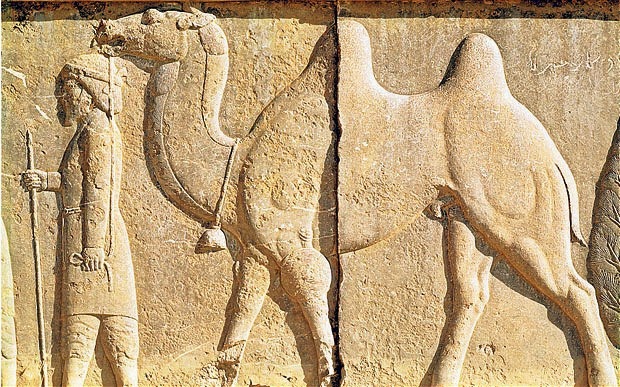My friends send me camel stuff.
Sometimes camels get better press than the recent MERS reports.
My friend Elayne sent this.
(You know if you click on the image, it will enlarge, right?)
The
Arctic Camel
Every news agency on the planet carried
the story of the Arctic camels in March 2013. Canada's northern
Fosheim Peninsula on Nunavit's Ellesmere Island was declared "a
paleobiological hotspot."[1]
"In March, researchers at Ottawa’s Canadian Museum of Nature made international headlines when they found ancient, mummified camel bones in the Strathcona Fiord region—the most northerly region to ever yield camel bones."
"A coal exploration project proposing to tread the same ground as the ancient fossil forests on Nunavut’s Ellesmere Island has been temporarily put on the shelf. Canada Coal has delayed its exploration program on Ellesmere Island for at least a year, and withdrawn its application to Nunavut regulators, saying it needs more time to address a host of concerns raised by people in nearby Grise Fiord and scientists across Canada and the U.S."
 |
| Toronto Star rendering of High Arctic Camel |
ScienceNews reported that these
were giant dromedary-type camels accustomed to a colder climate (not
as cold as the Arctic today).[2]
The finding supports the origins of camels in Canada millions of
years ago.
Of
course that doesn't explain this
from another friend:
The
Cariboo Camel
But it goes to show that the U.S. Army
wasn't the only outfit promoting the splendid beast of burden in
nineteenth century North America. These Bactrians came to work as
pack animals in the Cariboo Gold Rush (1860s) in British Columbia
(BC), Canada, from San Francisco after similar service in mining
camps there. Before that the animals came from a railway construction
camp in Arizona. Various factors were against the BC venture, such as
their disruptive affect on horses, stagecoaches, and the rugged
terrain tearing up their feet. Their legends grew as the camels died
off by chance, neglect, or killing.
And then there's this:
The
Biblical Camel
Archaeological news in early 2014 said
that domesticated camels were not in the Middle East until centuries
later than the Age of the Patriarchs. "In
all the digs, they found that camel bones were unearthed almost
exclusively in archaeological layers dating from the last third of
the 10th century BCE or later – centuries after the patriarchs
lived and decades after the Kingdom of David, according to the
Bible."[3]
Their
carbon dating refutes the use of
camels, for instance by Abraham, Joseph, Jacob, and other
historically dated figures. Therefore hot discussion (and not a
little distorted sensationalism) was triggered about what else could
be inaccurate in the Old Testament, a book written much later than
its times. However, domesticated may have been the overlooked
key word.
There we are. Camels are international
headliners. Be ever alert.
[1]
"Where Arctic camels once roamed, coal mining can wait,"
CBCNews, 24 December 2013
(http://www.cbc.ca/news/canada/north/where-arctic-camels-once-roamed-coal-mining-can-wait-1.2468667
: accessed 5 January 2014).
[2]
"Fossils on Ellesmere Island suggest famous desert dweller got
its start in the cold," ScienceNews, 6
April 2013
(https://www.sciencenews.org/article/camel-ancestors-lived-arctic :
accessed 7 February 2014).
[3]
"Archaeologists pinpoint the date when domesticated camels
arrived in Isarel," Phys.org, 3 February 2014
(http://phys.org/news/2014-02-archaeologists-date-domesticated-camels-israel.html
: accessed 7 February 2014).



No comments:
Post a Comment